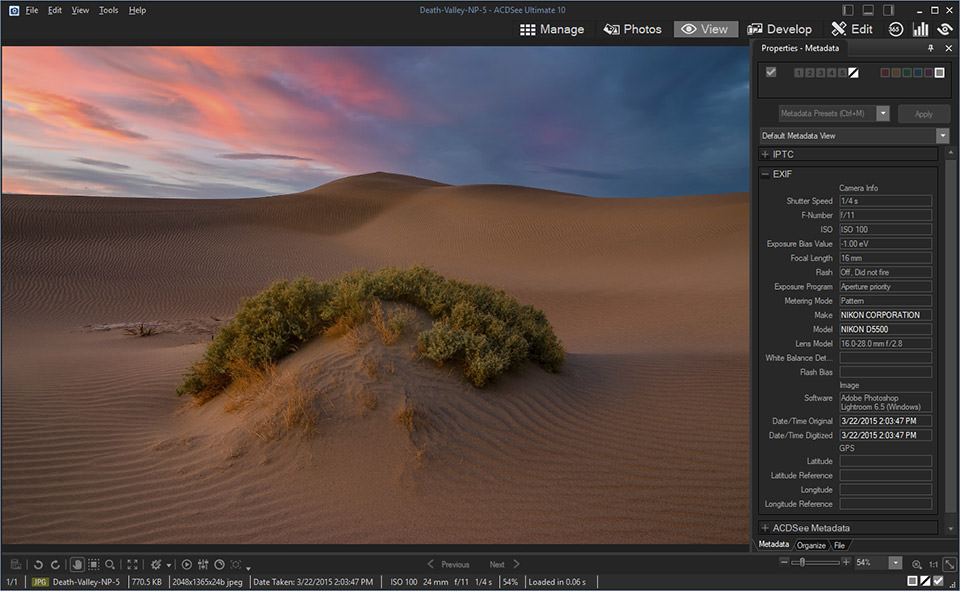

Getting the EXIF from a single image is dead easy, right-click on it select Propeties ( Windows ) or "Get Info" ( Mac ), there it is. When you edit all the info is kept and stored so it can be used to correctly catalogue your images. The books FotoVue produce are for photographers and that means you need to have the key informaiton like location, camera, lens, focal length, aperture, ISO, all that good stuff and one place that's stored is in the EXIF of every image. When I worked on my first photo book for FotoVue I'd shot and edited around 3,000 images files, from those we selected around 1,000 images to go into the book. This is the most basic info, on top of that there are extensions for the IPTC info which has tons more info like keyword trees, descriptions, copyright, all valuable stuff you store and maintain using software like Adobe Lightroom. The EXIF data contains the most critical info needed about an image, the camera, the lens, the focal length, aperture size, time and date of the shot and even the GPS info. Have you ever wondered how when you take photos using your mobilephone and then upload them to your favourite website, how does it know so much about the phote image file? The secret is the EXIF data stored within the JPG images you capture and then upload. What you need is a super fast, efficient language to do the job for you. Using Go to extract EXIF data from Image filesĮxtracting EXIF from a single file is easy but suppose you have a huge folder tree with hundreds or thousands of images, what then? Then suppose you have a publishing deadline for a book.


 0 kommentar(er)
0 kommentar(er)
